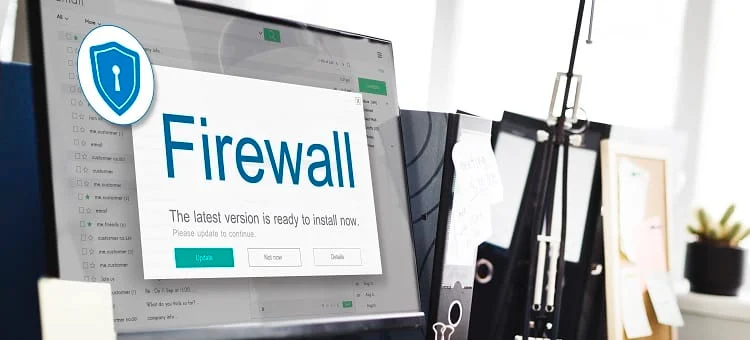The Basics of IP Addresses and How They Work
Every device connected to the Internet—whether it’s a computer, smartphone, or smart TV—needs a unique identifier to communicate with other devices. This unique identifier is called an IP Address.
But what exactly is an IP address? How does it work? And why is it important? Let’s break it down in simple terms.
1. What is an IP Address?
An IP Address (Internet Protocol Address) is a unique string of numbers assigned to every device connected to a network. It acts like a home address for your device on the Internet, helping computers find and communicate with each other.
📌 Example of an IP Address:
- 192.168.1.1 (IPv4)
- 2001:db8::ff00:42:8329 (IPv6)
Why Do We Need IP Addresses?
✅ To identify devices on a network
✅ To allow communication between devices
✅ To route data correctly across the Internet
Think of it this way: If you send a letter to a friend, you need their home address. Similarly, when you send a request on the Internet (like opening a website), your IP address ensures the data is delivered to the right device.
2. Types of IP Addresses
IP addresses are divided into four main categories:
A. IPv4 vs. IPv6
🔹 IPv4 (Internet Protocol Version 4)
- The most widely used type of IP address.
- Consists of four sets of numbers separated by dots.
- Example: 192.168.0.1
- Limited to 4.3 billion unique addresses, which is not enough for today’s internet-connected world.
🔹 IPv6 (Internet Protocol Version 6)
- Created to replace IPv4 due to address shortages.
- Uses longer alphanumeric addresses with hexadecimal numbers.
- Example: 2001:db8::ff00:42:8329
- Supports trillions of unique addresses, solving IPv4’s limitation.
✅ IPv6 is the future as more devices connect to the Internet.
B. Public vs. Private IP Addresses
🔹 Public IP Address
- Assigned by your Internet Service Provider (ISP).
- Unique across the entire Internet.
- Used for communication between your device and other networks (e.g., accessing websites).
- Example: 102.89.35.7
🔹 Private IP Address
- Used within local networks (e.g., home Wi-Fi, office networks).
- Not accessible from the Internet.
- Example: 192.168.1.1 (used by routers).
📌 Why Private IPs?
- Helps conserve public IPs.
- Allows multiple devices to share a single public IP via Network Address Translation (NAT).
C. Static vs. Dynamic IP Addresses
🔹 Static IP Address
- Fixed and doesn’t change over time.
- Used by businesses, websites, and servers.
- More reliable but costly.
🔹 Dynamic IP Address
- Changes periodically.
- Assigned by ISPs to home users.
- More secure and cost-effective.
3. How Does an IP Address Work?
Whenever you use the Internet, your IP address helps route data between your device and the requested service (website, email, video, etc.).
Step-by-Step Process:
1️⃣ You type a website URL (www.google.com) in your browser.
2️⃣ Your computer asks a DNS server to find the correct IP address of Google.
3️⃣ The DNS translates the domain name into an IP address (e.g., 142.250.180.14).
4️⃣ Your computer sends a request to that IP address.
5️⃣ Google’s server processes your request and sends back the webpage data.
6️⃣ Your browser displays the Google homepage.
All of this happens within milliseconds!
4. How to Find Your IP Address
📌 To find your public IP:
1️⃣ Go to Google and search “What is my IP?”
2️⃣ Your public IP address will be displayed at the top.
📌 To find your private IP (Windows):
1️⃣ Open Command Prompt (press Win + R, type cmd, and press Enter).
2️⃣ Type ipconfig and press Enter.
3️⃣ Look for IPv4 Address under your network connection.
📌 To find your private IP (Mac):
1️⃣ Open System Preferences → Network.
2️⃣ Select your connection (Wi-Fi or Ethernet).
3️⃣ Your private IP will be displayed.
5. Can Two Devices Have the Same IP Address?
🔸 Public IPs are unique worldwide, so no two devices can have the same public IP.
🔸 Private IPs can be the same within different local networks (e.g., two homes can have devices with 192.168.1.2).
6. How to Protect Your IP Address?
Since your IP address can reveal your location and track your online activity, it’s important to protect it. Here’s how:
✅ Use a VPN (Virtual Private Network): Encrypts your connection and hides your IP.
✅ Use a Proxy Server: Routes your traffic through another server to mask your IP.
✅ Disable Unnecessary Network Sharing: Prevents unauthorized access.
✅ Avoid Clicking on Suspicious Links: Hackers can track your IP through malicious websites.
7. Summary: Key Takeaways
✔ An IP Address is a unique identifier that allows devices to communicate on a network.
✔ There are two main types: IPv4 (common) and IPv6 (future-proof).
✔ Public IPs are used on the Internet, while Private IPs are used within local networks.
✔ Static IPs stay the same, while Dynamic IPs change over time.
✔ Your IP address is essential for browsing, sending emails, and streaming online content.
Final Thoughts
IP addresses are the backbone of the Internet, ensuring devices can find and communicate with each other. Understanding how they work helps you protect your privacy and troubleshoot network issues.






